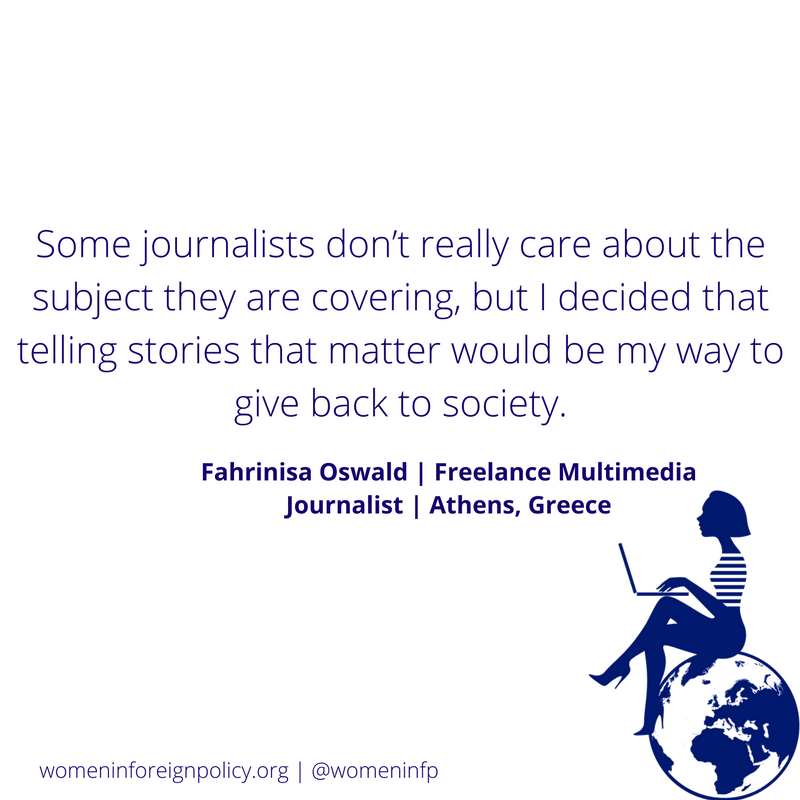Fahrinisa Fatima Oswald
/FREELANCE MULTIMEDIA JOURNALIST
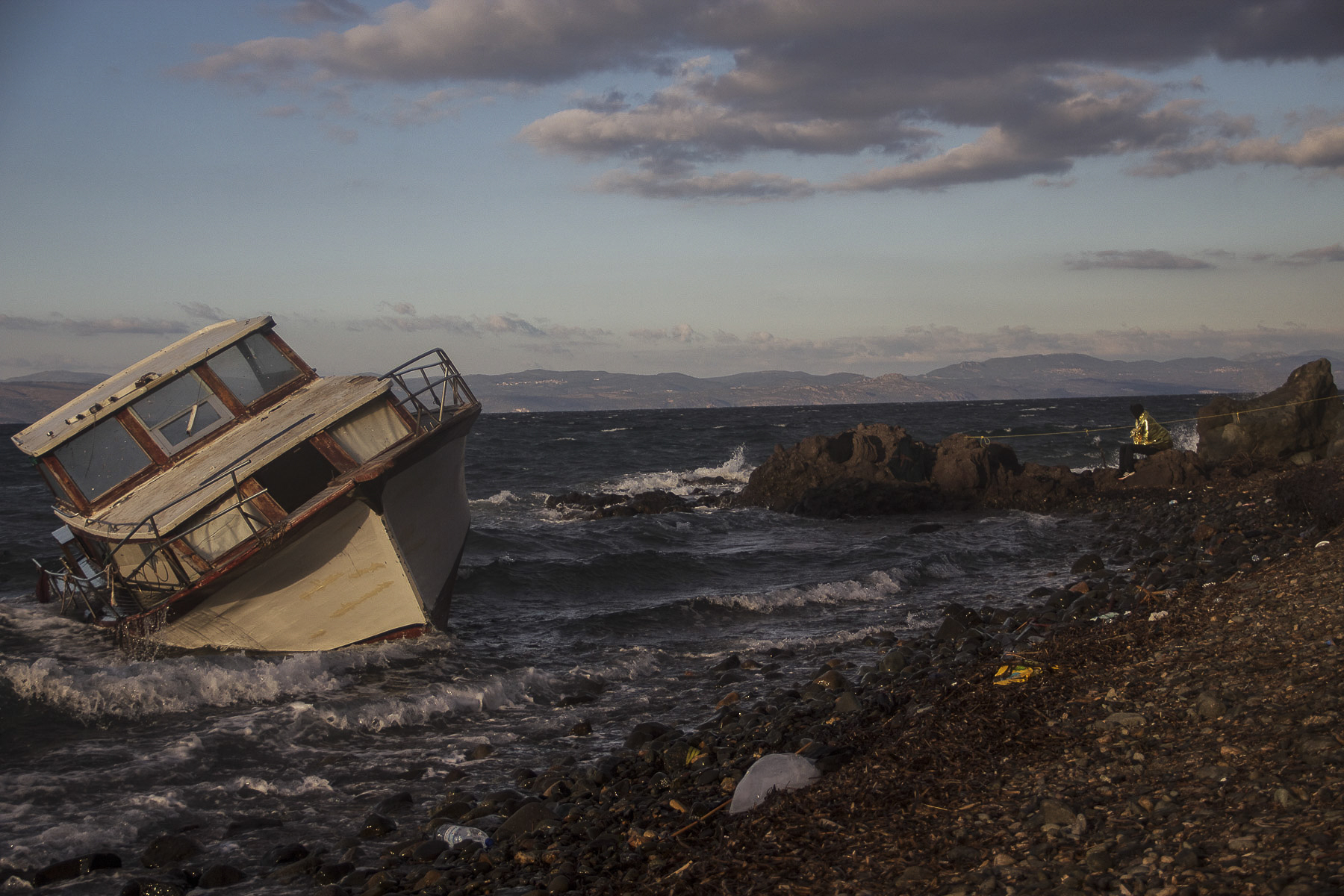
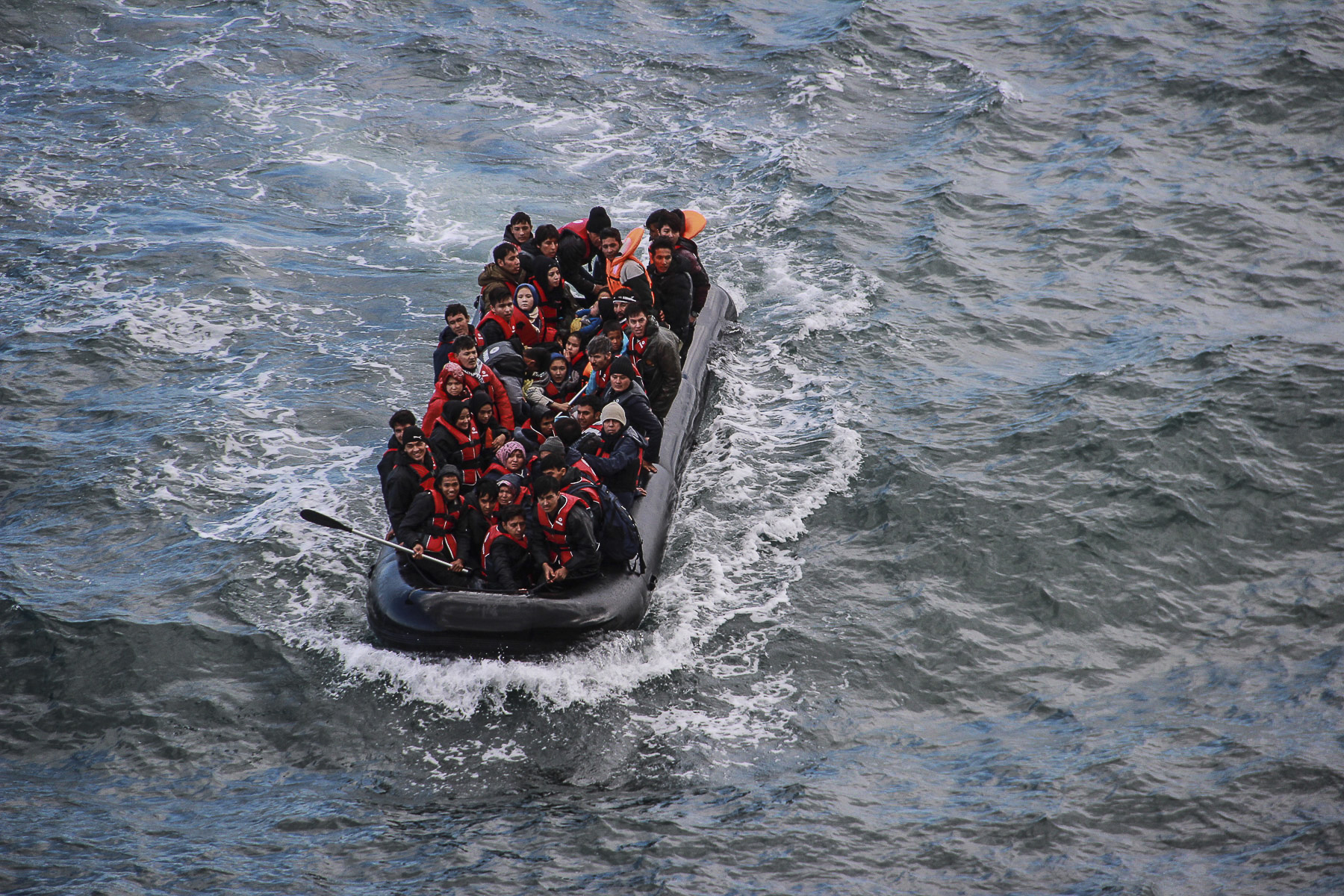
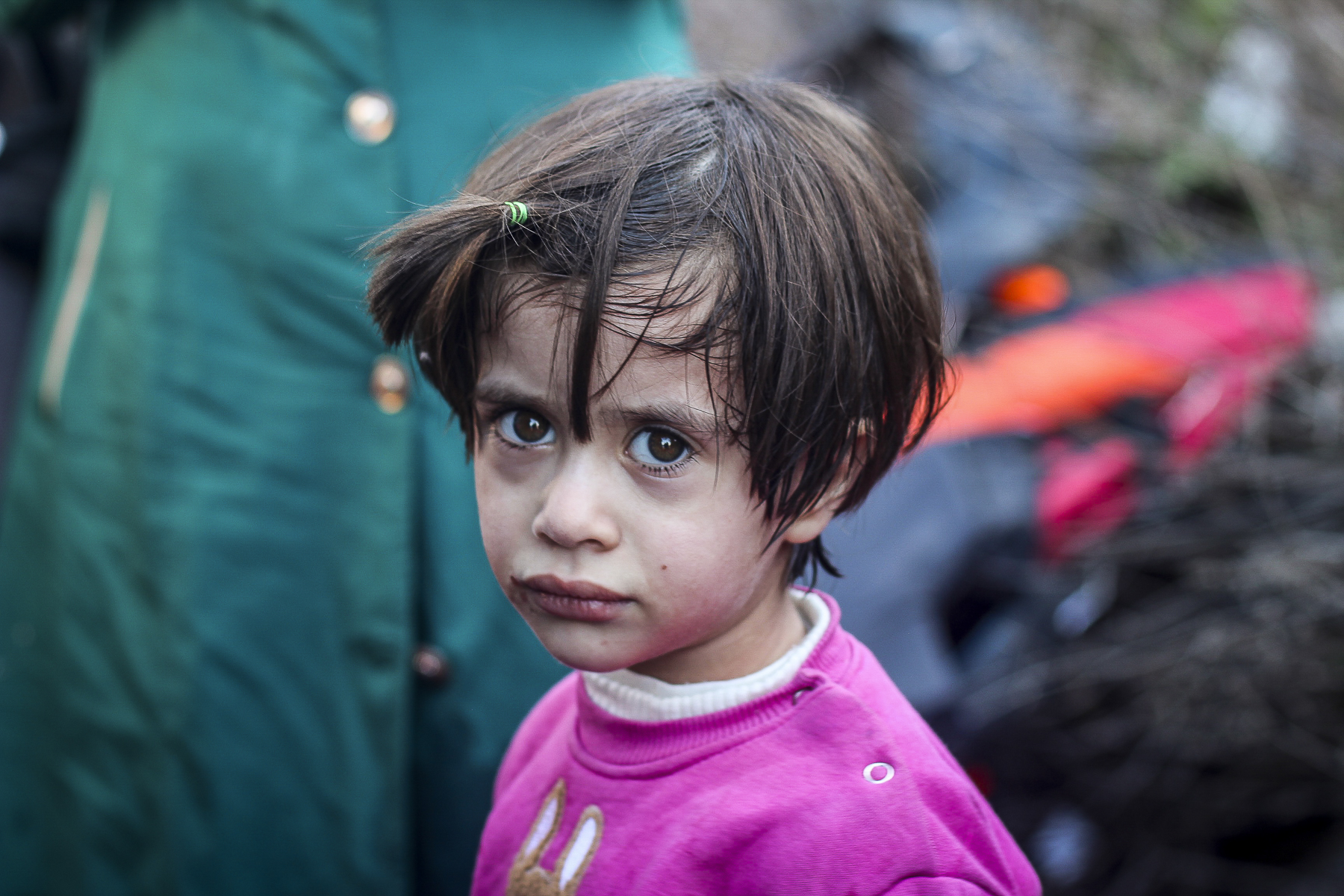
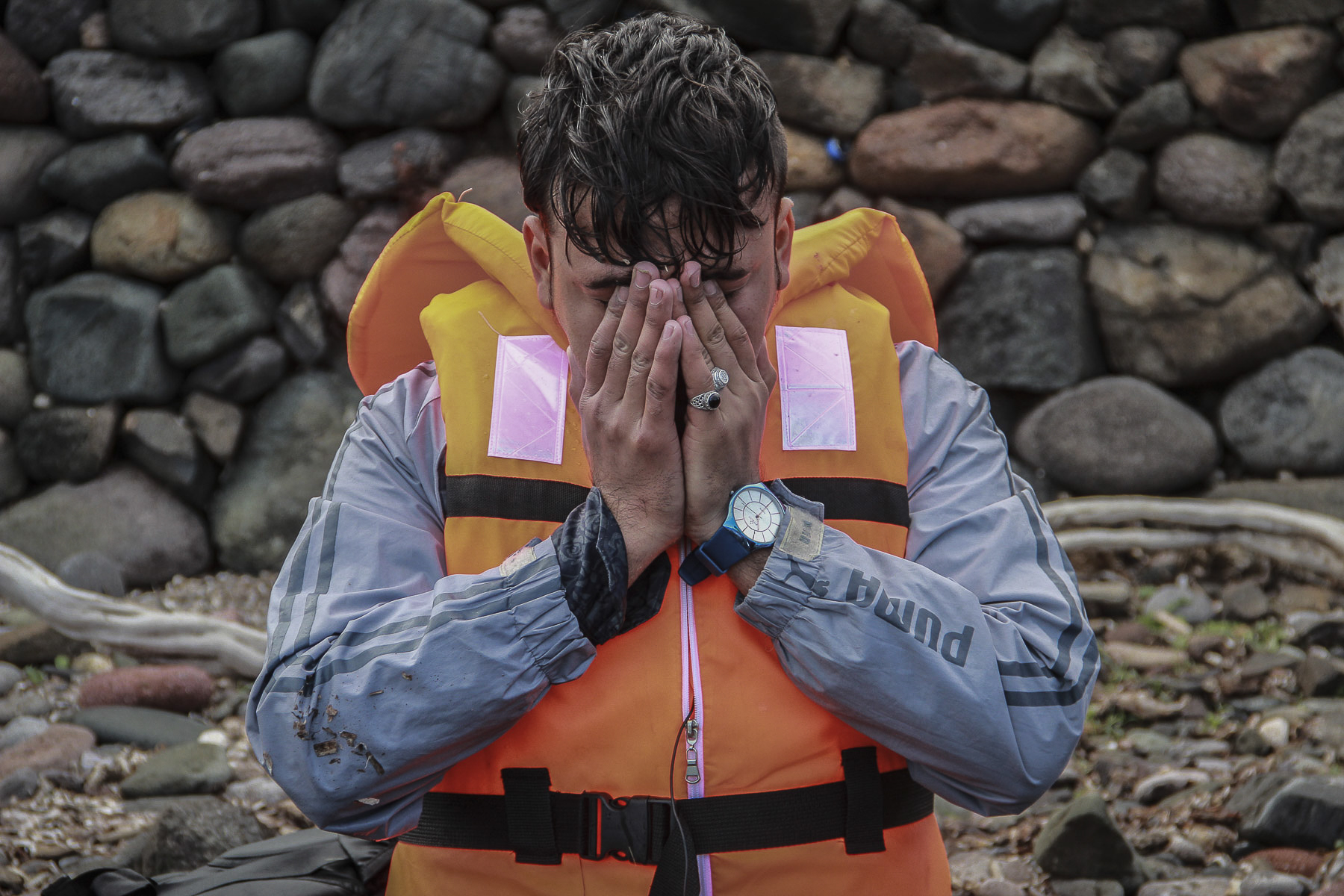
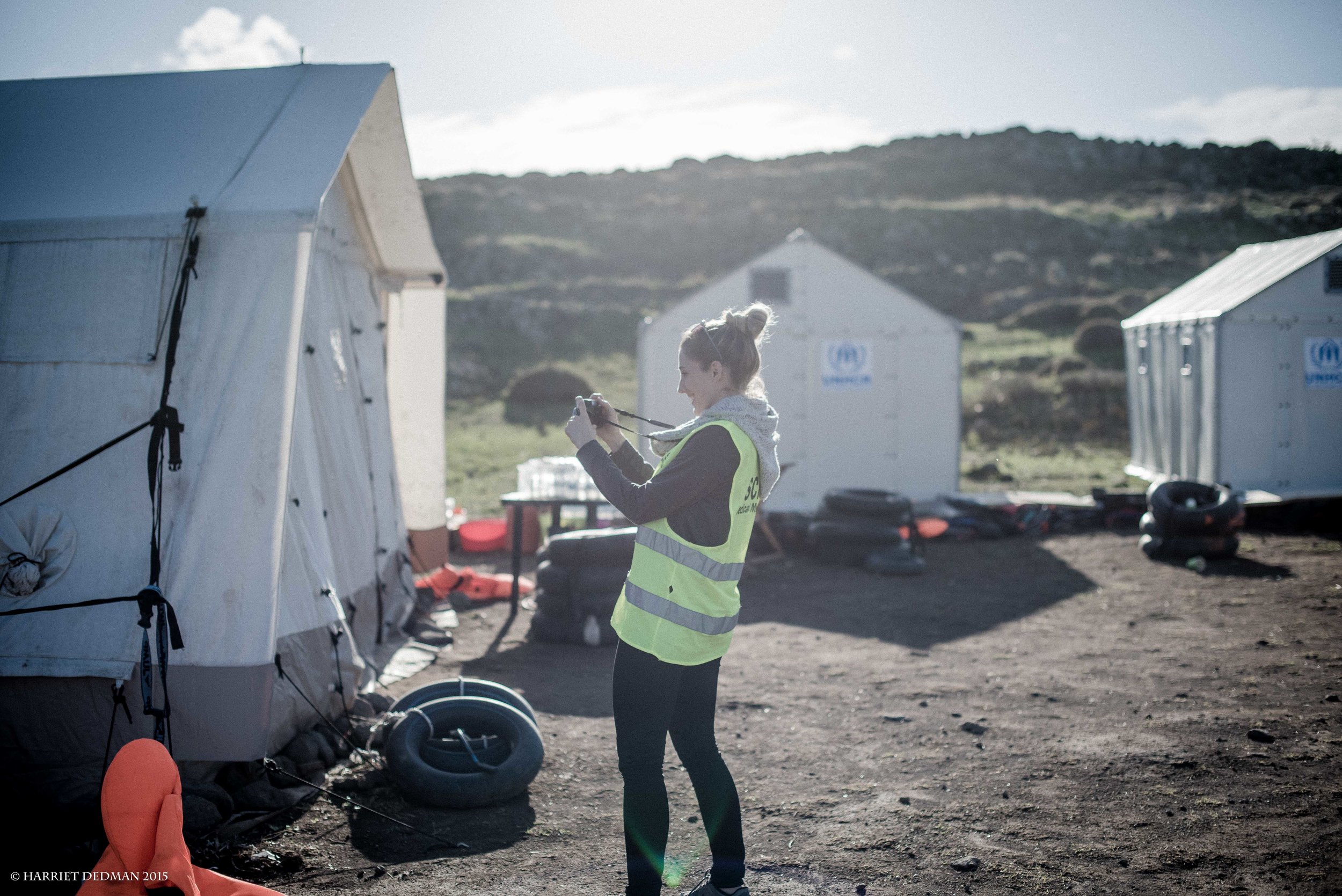
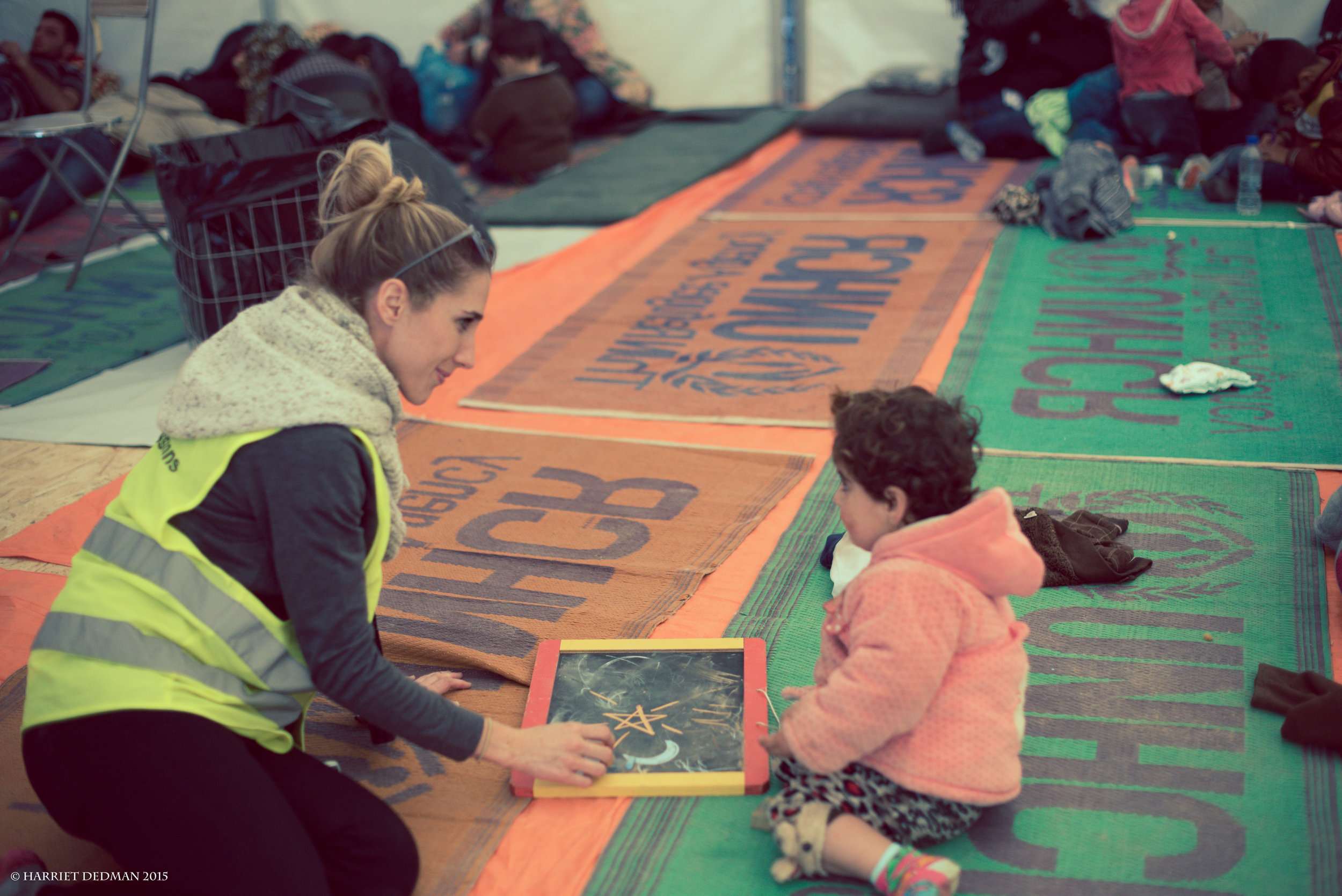

Why did you decide to become a photojournalist?
During the summer of 2003, I spent three months in Turkey with Lynsey Addario, Ivan Watson, and a bunch of fledgling journalists, all friends of friends. This period made their careers. That’s when I realized that I wanted to be a journalist. I felt at home with them. I understood what they were doing and why they were doing it.
It was so noble for a woman to be going to the frontlines. Lynsey was inspiring and I looked to her strength and her courage as well as her kindness. She did and still does it because she cares. I have always wanted to model myself after her for that reason.
Some journalists don’t really care about the subject they are covering, but I decided that telling stories that matter would be my way to give back to society. My desire to give back fulfilled my wanting to be a journalist, which is also why I have wanted to focus on women and children. They need more spotlight, especially in the current refugee crisis.
Why did you choose this gender focus?
I was awarded the Gender and Migration Fellowship by Columbia University. The stipulation was that I had to cover refugees through a gendered lens.
My focus is on women and young girls. It has worked out well because, in the beginning of the crisis, the majority of refugees were men: single men fleeing conscription into the Syrian Army, husbands coming ahead of their wives and children to pave the way... But when it became clear that the Syrian War wasn’t getting any better and borders in Europe would close soon, many women rushed to cross the Aegean with their children. Fewer people are coming over now but prior to 20 March 2016, two-thirds of asylum seekers were women and children.
When I flew over to Greece, I had no idea where I was going or what I would confront. I just knew I wanted to be there, covering the crisis. I knew that it was going to be an important moment in history. The first week was mindboggling. It was chaotic. It was really sad as October and November 2015 were the busiest months, with between 5,000 and 8,000 refugees arriving every day.
What was the hardest thing about those intense days?
I was physically prepared for the kind of work that I had to do. I was in the water for 8 to 10 hours a day. I stood on beaches. I was running up and down. I would sleep two hours and be on night watch, but none of that bothered me.
I was physically fit and ready for that; it was the emotional part that I didn’t expect. I thought “I’m going to Europe, it’s safe, how difficult could this be?” I didn’t expect the secondhand trauma, which is very real.
Spending every day on the beach, photographing and speaking to refugees —people that were fleeing war, death, and destruction and had been raped by ISIS —was very powerful and shocking on an emotional level.
As it was the beginning of winter and the sea became rough at the beginning of November and there were shipwrecks. Many refugees died in the water and washed up on shore. It was a very emotional time.
I went back every month after that for a week at a time until May, when I graduated and I moved to Athens full-time.
Why did you decide to relocate to Greece?
Even though Turkey is my second home, it seemed like the right choice because over the past couple of years, Turkey has become a hotspot. There have been a lot of bombing and extremist activity. It’s not a great idea to be a journalist in Turkey anymore. The government isn’t friendly to journalist. My safety was a concern and Athens is not far from the Middle East. If I want to go to Jordan or Lebanon, then it’s not far away.
I also experienced logistical issues.: I don’t have proper documents to stay in Turkey for more than 3 months, whereas, in Athens, I can live indefinitely. I am Italian-American and have two passports, which means I can live there and work there without having to worry about a visa.
The main reason is that there are 60,000 refugees stuck in Greece because of the EU-Turkey deal. So, it has become a “stable” crisis, as not a lot of the people are moving. I have access to the same people over and over and over again, on a daily or weekly basis. So, I can focus on longer pieces about the crisis. That is what this crisis needs because everyone is getting tired of the boat arrival photos and the dramatic scenes. We’re forgetting about it, which is frustrating and sad because 60,000 lives are still in limbo.
My focus is to find stories that have not been told and to take one, two, or three months to report on the story. At this point, the only thing that someone is going to read is a longer and more in-depth story about the refugee crisis. People don’t care anymore about the horrible living conditions or the sexual assault in camps. As sad as it is to say, there’s a fatigue with the refugee crisis. I am trying to stick it out and to continue to tell the stories that need telling, especially when it’s about women and children as they suffer a lot.
The stories I am currently doing include a photo-story on motherhood as a refugee. I am doing a story about the women who wash dead refugees when they wash up on shore after a shipwreck. I am following some leads on human trafficking stories and unaccompanied minors. It takes a long time and some of these stories are dangerous.
How did you become a photojournalist?
I have wanted to be a journalist since I was 18. When I was much younger, I wanted to work for the UN. I wanted to change the world. I went to university to study Linguistics. Separately, I studied photography and photojournalism, searching for a way to combine the two. I graduated from Hunter College in New York City with a Linguistics degree and from The International Center for Photography with analog and digital photography, black and white, in color... I went off to Brazil in 2008, wanting to take a break from school. I wanted to do a master’s degree but not right away.
I still needed to figure out how I would be a journalist as well as an activist. I was teaching English, spending a year trying to figure it all out. I applied to the University of London to do a master’s degree in Intercultural Communication. After graduating, I still didn’t feel like I had found the perfect combination between journalism and activism. I did not feel pure journalism was powerful enough to change the world in the way I wanted to.
So, in 2012 I moved to India. I worked for Atma Education as their resident photographer because I needed to bolster that side of my skills. I spent a year photographing all the different NGOs that Atma encompasses. That’s when I began to love what I was doing – especially when I was working in the red light district with sex workers, and their children. I thought “This kind of work can have an effect on the world. I want to show the world what is happening and if the world sees what is happening they’ll stop it.”
I now know that I was a bit naïve but after that experience in Mumbai, I wanted to become serious about journalism. That’s when I applied to Columbia University. I got in in 2015. I was still struggling with the balance between activism and journalism. I’m not the only one who is struggling. I had several arguments, with professors about this invisible but real line that people have drawn between being a journalist and an activist. The argument is that if you are an activist you are not an unbiased journalist.
My argument is that we do not necessarily always have to be unbiased, especially for topics like domestic violence, sexual assault and rape. You can take a stance on certain subjects. Even today I struggle with this balance because I want to have a strong impact.
Sometimes I write a piece or I take a photograph and thousands of people see it but nothing happens. The person that I am interviewing goes through pain in talking about what they have been through. For instance, this female refugee woman who lost her baby because she got food poisoning. She cried throughout my interview. I thought to myself afterwards “If this photo series doesn’t change something, I don’t know if it was worth putting her through that pain again” and to put myself through that trauma.
I am still searching for a way to bridge that gap, to have more of an effect with my work. I might end up working for an organization like Save the Children or UNHCR. I feel strongly that pure journalism isn’t enough anymore to achieve significant change.
What skills make you good at what you do?
Empathy goes a long way. I am a trained photographer and have done many courses in photography. I have the basic photography skills, and during my year at Columbia I focused on my writing but it’s so much more than just the writing and being able to work a camera.
It’s not really about the camera. People always ask “What camera do you use?” and “What lens do you use?” I use some of the smallest cameras out there. I use them on purpose because they are non-threatening, non-intrusive and people don’t notice them. I can walk right through security with a camera hanging around my neck and no one is going to notice me and say “journalists aren’t allowed in here.” Having a small camera forces me to get close to the people whose story I want to tell. If you’re not close enough you’re not going to have an emotional connection with them and you are not going to get the real story.
The story that you get when you are not close enough is incomplete. You might get the great details and maybe all the gory details but you have to feel a person in order to be able to write about them and to photograph them. Even more so for women from Muslim countries because they are not comfortable in front of the camera. Sometimes it will take a month before a woman will let me take her photograph. Journalists who parachute in on-assignment only have a few days, therefore, it’s hard to expect them to have a real emotional connection with the subject.
As I am based in one place, I can form relationships that help being able to tell their story and getting their photograph. Either they don’t notice that I’m there anymore or they are looking into the camera in a way that you know they have an emotional connection with me.
Of course, I recommend being a trained journalist, getting a master’s degree or taking photography courses but it’s not the only way. Lynsey Addario did not go to school for journalism. She did it the hard way and self-trained but it’s a very different time today. It’s also about your personality and how you interact with people, it’s about having people skills and building trust.
What is a typical day like?
I wake up. I check my email and check the news. Back in July, I wrote a piece on a shipwreck which I found out about through a friend. He’s a volunteer and I noticed on his Facebook timeline that he posted about a shipwreck off the coast of Lesvos. The news was not covering it and it had not appeared in any news outlet. I confirmed with him and another organization it was real and flew down the next morning to cover it.
After scanning the news and social media, I head out to camps. There are several camps on the outskirts of Athens. Other are abandoned buildings in the city center taken over by political groups and refugees that have been moved in.
I spend my day there. I know a lot of people now, refugees, volunteers and UN workers. I go back to the same places often and spend time with refugees depending on what story I am working on. If I am working on a motherhood story, then I will go sit with the mothers that I have identified to be in my story.
With the shipwreck story, I spent a week in Lesvos working from around 8am until midnight or 1 am. The shipwreck was a special case because it was the first and last time that it was happening. I had to be there quickly. I had to be there when they found the bodies. I had to be there when they did the autopsies, when the survivors identified the dead, when the family of the survivors flew in, when they did the washing and the burial, when they went to the police station to pick-up the personal affects, and then, when they went to the port to take their boat to Athens.
I interviewed all the survivors and spent endless hours at the camps, in hospitals, in the morgue and in the cemetery. That was not a typical week. I usually spend half my day in the camps, half my day on my laptop editing photos, writing, rewriting, redrafting, and contacting sources. It is a nice split between work at home and work in the field. I do not normally go to the same camp two days in a row. I will go to a different camp every day or travel across the region. This month, I am going up north to Thessaloniki. They have about 80 camps and 40,000 refugees.
How do you think photojournalism is going to evolve?
We cannot have such a stark line between advocacy and journalism because many people want to be journalists to have an impact on the world. Whether it’s spreading knowledge, changing policy, etc. We will not be able to have a great effect unless we blend journalism with advocacy and activism. This is a sensitive subject in the journalism world right now. People are either on one side or the other and very judgmental on both sides.
That said, I know the type of journalist I want to be and cannot be bothered by what other people say. We are all free to be whatever kind of journalist we want to be. I want to be a journalist who has a bigger effect on the world. You cannot do that without being emotionally invested in the cause and blending it a bit with advocacy and activism. That is the direction my career is headed.
I would like to be a wire photographer on the one hand but on the other hand, I really like working on longer, in-depth, stories. I love to write. I like working on both the photography for my writing and the writing for my photography. It is a special combination. Most journalists work in pairs with one writing and the other photographing. I feel lucky in being able to do both. It has a stronger effect because when I am writing a story I am thinking about the photos that I need to take to match it exactly or vice-versa.
I am at a turning point in my career. After my tenure ends with the Columbia Fellowship, I will have to make a decision about what I want to do next, not only for income but for myself and my career. I am looking towards long-form journalism and focusing on things I really care about. I care about the well-being of women and children. I want to invest myself in this more.
What has been the biggest challenge in your work?
The emotional trauma. The effect my work has on me was a surprising element and it is something that I am learning slowly how to deal with. In October 2015, when I first went over, I did not realize what had happened to me until I flew back home. I spent the entire flight sobbing. It took me a couple of weeks to realize I was experiencing PTSD as I had never been in that situation before. I had no tools to recognize what was happening to me.
I took steps to heal myself and prevent that from happening again. Each time that I went back I was more and more prepared for what I was going to see but it still affected me. After I did the reporting on the shipwreck, when I went home, I had to focus on my mental health. I was much more involved in the story than I thought I would be. I drove the sisters of a deceased woman to the body washing and the cemetery. I was holding them up when they could not stand anymore because they were crying so hard. I saw the bodies. I was at the burial. I heard the stories of the survivors. I was strong in the moment, and you have to be strong in the moment, you have to have a mechanism that you can kind off turn off the personal pain but still have an emotional connection with the person—and feel their pain to a certain extent—so that you can ask them about their story and care about them. When I got back to New York, I had a long talk with my editor and described what was happening. I thought I was fine but it turned out I was not. Some people are ashamed to talk about it but that is not good because if you do not talk about the effect your work has on yourself, it just gets worse and worse.
There are therapists dealing specifically with conflict journalists. Over the past couple of years, psychologists have started to realize that photographers and journalists who cover soldiers also develop PTSD. There has been a movement towards therapy for journalists who work in conflict zones. Greece is a semi-conflict zone as the people I deal with are traumatized and their stories are traumatizing.
My life isn’t being threatened. I am not being shot at and there are no barrel bombs dropping on my head but it is a different type of psychological trauma and it goes very deep. It took me a couple of months to realize that I needed to pay attention to myself. Now, I have a routine: when I feel like things are spiraling out of control or I feel unable to get myself out of bed and into the camps again, I do things. I have a coloring book, I listen to podcasts, I talk to other people in the field and I talk to therapists. I have a bullet journal that has a section that is dedicated to my moods, psychological state and self-care.
What I am covering right now might not be the most traumatizing subject in the world and it may not be the most traumatizing thing that I cover in the future but it is the beginning. I want to start out on the right foot. I want to start out healthy. If I am not healthy, then I am unable to do my job. It is really important for me to keep tabs on myself because I do think that what I cover will get worse. This is just the beginning and the tip of the iceberg on the trauma level. I want to be strong enough to handle anything that is thrown my way and to not spiral down into depression or have my work affect my personal relationships. There was a point in the summer when my personality was affected. I was not inherently happy anymore. I would snap when someone complained about ‘first-world problems.’ I cannot do that because it is not right for me to throw the problems I see in the world in someone else’s face who has not experienced it. I want to continue addressing this well into the future because this is what I want to do for the rest of my life. I cannot let these things take me down.
What piece of advice would you give to someone hoping to break into the field of photojournalism?
Follow your instincts and take calculated risks. Every decision I made involved a risk and was taken on instinct. I had thought about applying to Columbia a lot and knew it would be great to have these skills and to have Columbia on my resume. Going to Greece in October and not knowing anyone there and never having reported on trauma before was a huge risk. I remember being so scared in the airplane. I knew something big was happening. I felt out of my element but I took the risk, I went.
Even when Columbia threatened to fail me if I didn’t come back, I decided to keep going back to Greece because I was in school to become a journalist. Without a doubt, I knew that I was doing the right thing. That was a risk. Had I failed Columbia, it would have been devastating for me. But I did both ... I did not miss a single class. I used my reporting on-the-ground for all my classes and slowly my professors came on board. In May, upon graduation, I was offered a fellowship for the work that I had done in Greece, having been told by the most powerful people in my life not to do it.
My advice to someone who wants to break into this field is to follow your instinct and trust yourself. Don’t give up, persevere. If you believe in yourself, then other people will believe in you. It may take time and a lot of blood, sweat, and tears but the right thing to do is what you feel is right. Nothing great is accomplished without taking risks.
Is there anything you would like to add?
I am learning every day on the job. I am creating something new every day. Every story is a creation. I start from scratch. It is hard. It is tiring. But I really believe in what I do and I really love what I do. I have to keep going. Have a big dream, but go slowly, one foot in front of the other.
I feel lucky in a lot of ways. I have worked really hard but every day I wake up and feel grateful for my life trajectory. From the time that I wanted to become a journalist to the time that I felt like a real journalist, it has been a good 10 years. At a certain point, I got a little bit down about it. I was not pursuing my dreams but I realize now that with my personality, if I had become a journalist at 19, 20 or 21 years old, I would be dead by now. I do not have a lot of fear. If someone had told me to go to Iraq or to go to the frontlines in Syria, then I probably would have gone without much thought. It took me this long to get into journalism because I really think my personality needed to mellow out a bit. I needed to learn more about the world and about myself before doing this kind of work. We go through everything for a reason. I am still at the very beginning of my career and do not know where I will end up but I trust that if I continue to work hard and do what I love, everything will happen as it should happen.
I met Lynsey Addario and she really inspired me, 13 years ago. However, two weeks ago, I met her again in the field, as colleagues, and that was the moment in time were it clicked. My circle closed. I am doing it. I did it! She was my inspiration and there I was, by her side covering the same thing she was covering. It was amazing for me to have that second run in with her. We caught up on old times and mutual friends but it was so symbolic that she was my inspiration, and now she is my colleague. Despite it being 13 years, I feel like it was meant to be.
CV in brief:
Four years of experience
Education: Columbia Journalism School, Master’s in Journalism | University of London, Master's in Intercultural Communications | International Center of Photography | Hunter College, City University of New York, Bachelor's in Linguistics
Previous jobs: Documentary Photographer and Communications Manager at Atma Education | Contributor, Writing and photography at Unmappedmag.com
Languages spoken: English, Portuguese, Spanish
Find Fahrinisa online: Website | Twitter @Fahrinisa | Instagram: Fahrinisa | Linkedin: Fahrinisa Fatima Oswald
Exclusive Skype interview by Clara Martinez, 19 September 2016.




